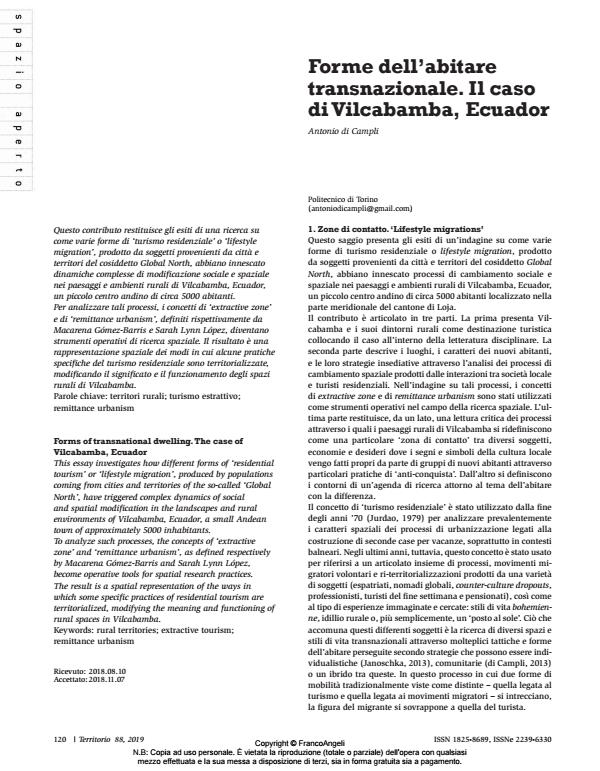Forms of transnational dwelling. The case of Vilcabamba, Ecuador
Journal title TERRITORIO
Author/s Antonio Di Campli
Publishing Year 2019 Issue 2019/88
Language Italian Pages 12 P. 120-131 File size 687 KB
DOI 10.3280/TR2019-088018
DOI is like a bar code for intellectual property: to have more infomation
click here
Below, you can see the article first page
If you want to buy this article in PDF format, you can do it, following the instructions to buy download credits

FrancoAngeli is member of Publishers International Linking Association, Inc (PILA), a not-for-profit association which run the CrossRef service enabling links to and from online scholarly content.
This essay investigates how different forms of ‘residential tourism’ or ‘lifestyle migration’, produced by populations coming from cities and territories of the so-called ‘Global North’, have triggered complex dynamics of social and spatial modification in the landscapes and rural environments of Vilcabamba, Ecuador, a small Andean town of approximately 5000 inhabitants. To analyze such processes, the concepts of ‘extractive zone’ and ‘remittance urbanism’, as defined respectively by Macarena Gómez-Barris and Sarah Lynn López, become operative tools for spatial research practices. The result is a spatial representation of the ways in which some specific practices of residential tourism are territorialized, modifying the meaning and functioning of rural spaces in Vilcabamba.
Keywords: Rural territories; extractive tourism; remittance urbanism
Antonio Di Campli, Forme dell’abitare transnazionale. Il caso di Vilcabamba, Ecuador in "TERRITORIO" 88/2019, pp 120-131, DOI: 10.3280/TR2019-088018